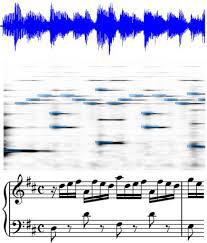Investigation on the use of Hidden-Markov Models in automatic transcription of music
Hidden Markov Models (HMMs) are a ubiquitous tool to model time series data, and have been widely used in two main tasks of Automatic Music Transcription (AMT): note segmentation, i.e. identifying the played notes after a multi-pitch estimation, and sequential post-processing, i.e. correcting note segmentation using training data. In this paper, we employ the multi-pitch estimation method called Probabilistic Latent Component Analysis (PLCA), and develop AMT systems by integrating different HMM-based modules in this framework. For note segmentation, we use two different twostate on/o? HMMs, including a higher-order one for duration modeling. For sequential post-processing, we focused on a musicological modeling of polyphonic harmonic transitions, using a first- and second-order HMMs whose states are defined through candidate note mixtures. These different PLCA plus HMM systems have been evaluated comparatively on two different instrument repertoires, namely the piano (using the MAPS database) and the marovany zither. Our results show that the use of HMMs could bring noticeable improvements to transcription results, depending on the instrument repertoire.
PDF Abstract


